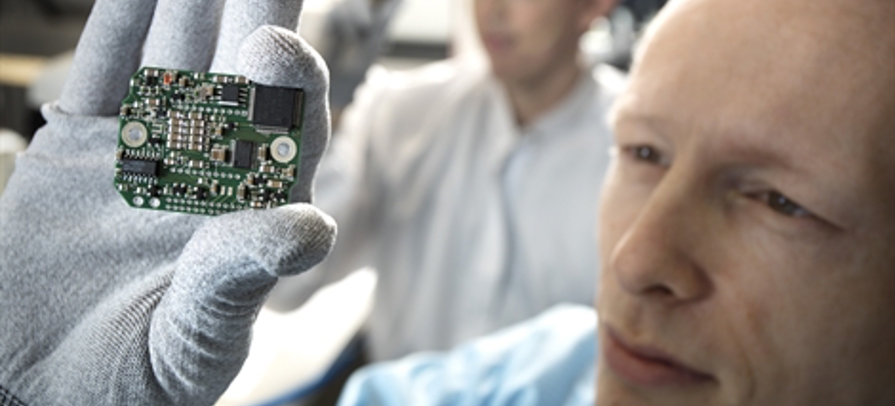David Arge Klevang Pedersen vart ph.d. á DTU Space
Týsdagin 26. januar vardi David Arge Klevang Pedersen ph.d.ritgerð sína á National Space Institute á DTU Space. Ritgerðin kallast “High Accuracy Tracking of Space Borne Non-Cooperative Targets.”
Arbeiðið er gjørt á National Space Institute á DTU og á Jet Propulsion Laboratory, California Institute of Technology hjá NASA í USA. Høvuðsvegleiðari hevur verið John Leif Jørgensen professari á DTU. Undir uppihaldi í California hevur Carl Christian Liebe frá NASA verið vegleiðari.
Í metingarnevndini vóru
Lawrence Wade dr. frá JPL/NASA/Caltech, serfrøðingur í menning av granskingar- og rúmdartøkni Alexander Cropp, dr., ESTEC/ESA, serfrøðingur í navigering og kontroll av fylgisveinum
José Merayo, lektari, serfrøðingur í rúmdartøkni, DTU
Í ph.d. verkætlanini hevur David arbeitt við at menna nýggjar hættir at málrætta navigering í rúmdini og á Mars við hjálp av kamera tøkni nýtt umborð á fyrlgisveinum til at navigera eftir stjørnunum.
David hevur arbeitt við NASA í sambandi við rúmdarfarið Juno, sum er ávegis Jupiter. Hann fekk í hesum sambandi tvær serligar viðurkenningar kallaðar “Group Achievement Award”, id verður latin fyri framúr gott arbeiði. Í samband við tann komandi Mars rovaran hjá NASA, Mars2020, hevur David ment nýggjar hættir til at navigera eitt tól á rovaranum móti Mars steinunum, har tað snýr seg um at leita eftir teknum um fyrrverandi lívið á Mars. Harumframt hevur David ment hættir til at navigera fylgisbeinar relativt millum hvønn annan. Hetta arbeiði er ógvuliga sentralt og viðkomandi fyri framtíðar missiónir hjá ESA og NASA.
Metingarnevndin hevði nógv rósandi orð um arbeiðið hjá David. Sagt varð soleiðis í niðurstøðuni:
“In summary, David has demonstrated excellence in algorithmic as well as vision based systems modelling and their application and validation. In addition, he has authored a number of published papers in relevant journals, which is an impressive achievement and they are considered to be relevant and useful to up-coming missions. David’s Thesis is of high quality, thoughtful and comprehensive. It is rare to see such a broad thesis, in which each of the scientific experiments presented are so thoroughly executed and described.
The evaluation board thanks the candidate for an excellent presentation and a very comprehensive thesis. It is remarkable that the techniques developed by David have been already implemented in the flying Juno mission, in the PIXL instrument which is now in full implementation and as an experiment in the Proba-3 mission.”
David arbeiðir nú sum granskari á DTU Space, har hann skal arbeiða víðari á missiónum sum Juno, Mars2020, Proba3 í neyvum samstarvi við NASA og ESA.
Les um David Arge Klevang Pedersen í Heilagrunninum
Abstract
This dissertation is focused on the subject of tracking non-cooperative targets, by the use of a vision based sensor. With the main goal of navigating a spacecraft or a rover. The main objective of the dissertation is to apply image processing methods to facilitate accurate and robust measurements for the spacecraft to navigate safely and autonomously towards the target. These methods are applied on three distinct study cases, which are based on the platform of the microASC instrument.
In relation to the Mars2020 rover, a structured light system is used to navigate the PIXL instrument towards the Martian surface, whose objective is to seek evidence of ancient life in the form of chemical biosignatures. The structured light is a subsystem of the PIXL instrument consisting of two active lasers and an imager. The structured light makes use of active triangulation to support a safe approach towards the surface and to enhance the PIXL instrument's capabilities by highly accurate distance measurements.
Optical observations of planetary bodies and satellites are utilized to determine the inertial position of a spacecraft. A software module is developed, tested and verified by both ground based and in-flight observations, where the performance over the complete operational envelope is characterized by simulations. The in-flight observations were captured onboard Juno, during the Earth flyby, by the microASC instrument, operating as an inertially controlled imager. The involvement in Juno's
Earth Fly By operational team and processing of the captured data was recognized with two Group Achievement Awards from the National Aeronautics and Space Administration.
With today's advancement in autonomy, the focus is set on in-flight tracking of a non-cooperative artificial satellite with the end goal of capturing the target. The objective is to facilitate a sensor technology that enables fully autonomous relative navigation between a target and chaser. A novel method is designed, tested and verified to comply with the requirements for the final phase of a rendezvous scenario, applicable to servicing and sample return missions.
Mynd: David Arge Klevang Pedersen
